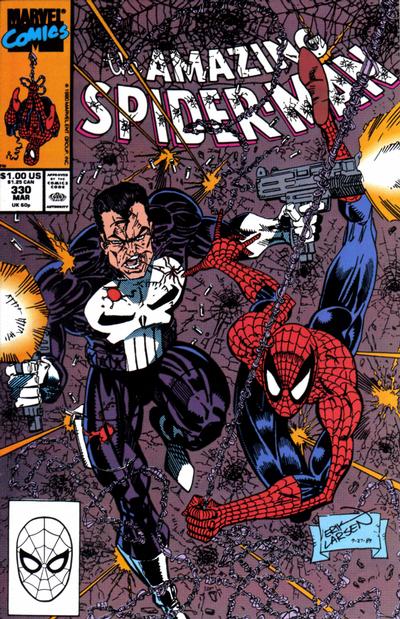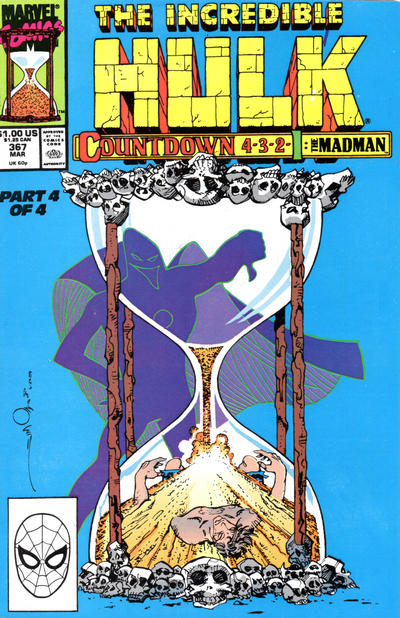I don’t remember why I stopped shopping at AAA Best when I started my junior year at the University of Arizona. Instead, I starting shopping weekly in Tucson at Fantasy Comics, which is located at 2745 N. Campbell Ave.
Fantasy was in an unremarkable one-story building, with a glass case at the front full of its more expensive comics. New releases were racked to the immediate right. The rest of the current comics were stocked in alphabetical order in racks that stretched to the back of the shop. The main floor featured lots of back issues. Charlie Harris, a frequent DC “letter hack,” either owned the store or worked there.
One of the most memorable things for me about shopping at Fantasy was that back issues were in heat-sealed bags. To get them open, you needed scissors, so there were lots of discarded comic bags in my trash.
Into the Trek comics wormhole
I fell deep into Star Trek at the time. DC published in August new Star Trek and Star Trek: The Next Generation series that I really enjoyed. Star Trek V: The Final Frontier had done poorly at the box office and with critics, but Star Trek: The Next Generation‘s third series debuted in September and was by far its best to date.
But it was the classic Star Trek comic that really caught my eye. It had clever scripts by Peter David and slick art printed on good paper from the team of James Fry and Arne Starr. And nothing beat those covers by Jerome K. Moore. They are spectacular and I never tire of looking at them or admiring the skill Moore brought to those illustrations.
My Star Trek obsession led me to a Star Trek convention experience that cemented my fandom for that franchise. It was a weekend Creation Convention at the Tucson Convention Center, with special guest Patrick Stewart.
Prior to Stewart’s entrance, Gene Roddenberry’s assistant, Richard Arnold, previewed upcoming episodes of The Next Generation. These were sneak peeks at some of the best in the series’ run: “Deja Q,” “Yesterday’s Enterprise,” “Sins of the Father” and “Captain’s Holiday.”
Stewart appeared for a charming Q&A session at the end of the day. Among the secrets he revealed: He had accepted a teaching job at the University of Arizona. But the offer slipped through through the cracks and after landing the role of Captain Picard, he never looked back. What might have been!
Marvel’s X-Men on the rise
The other hot franchise was X-Men. It had been a best-seller for years at this point, but new artists raised the excitement to a new level. Jim Lee’s arrival on X-Men seemed inevitable after lengthy runs on Alpha Flight and Punisher War Journal. He did a few issues here and there at first, before taking the full reins in the summer of 1990. At the same time, Rob Liefeld also was pitching in on X-Men titles and getting some heat. He took over the penciling chores on The New Mutants in 1990 and introduced Cable, another high point. Erik Larsen took over penciling The Amazing Spider-Man from Todd McFarlane, who was set to launch a new Marvel title. With Marc Silvestri jumping from X-Men to Wolverine, the seeds of the Image revolution were taking root.

Alpha Flight #53 (Dec. 1987) 
The Amazing Spider-Man #330 (March 1990) 
The New Mutants #87 (March 199o) 
Punisher War Journal #7 (July 1989) 
The Uncanny X-Men #245 (June 1989) 
X-Factor #40 (May 1989)
But Star Trek had sort of taken over my mind. I collected the first DC series, re-watched the movies and original TV shows, and even enjoyed some of the Star Trek novels. “Writer of Stuff” Peter David was the creator whose work I most enjoyed, leading me inevitably to The Incredible Hulk.
Lost in the aisles of Bookman’s
Fantasy was but one of the shops I frequented that year. Another mainstay was Bookman’s, a used-book store that filled a former grocery store space with tons of fascinating objects. Each visit took hours, it seems. I’d start with out-of-town newspapers and move on to a newsstand section full of old and new magazines. Then there were aisles full of used books, cassettes, CDs, and bargain low-grade comics. I always flipped through Comics Scene and the Comics Buyers Guide, catching in the latter news of a Peter David signing at All About Books and Comics in Phoenix. I skipped out on school to drive up from Tucson in time to hit the Thursday evening event.
The Hulk tour hits Phoenix
The signing was part of a tour promoting David and artist Dale Keown’s work on The Incredible Hulk. Keown had only drawn two issues of Hulk at this point, and the signing was sparsely attended. That gave everyone a chance to hang out with David and Keown and chat about a lot of things. David signed several Star Trek issues for me, a Next Generation novel he’d written, and some Hulks. He joked about calling his editor back in New York to rave about the warm Arizona weather.

The Incredible Hulk #351 (Jan. 1989) 
The Incredible Hulk #367 (March 1990) 
The Incredible Hulk #372 (Aug. 1990)
To my surprise, Keown hailed from Alberta, so we talked about Canada and Arizona, as well as comics. I remember he sold the splash page to The Incredible Hulk #367, his first issue, for about $150. A few years later, I saw the same page for sale in another Phoenix-area store for many multiples of that.
The signing was part of a mini-tour that continued that weekend to comic shops in Los Angeles and Las Vegas. All About produced a poster for the signing similar to the McFarlane one I wrote about previously. Mine is framed but in storage.
Hunting for back issues in Tucson
After that, I started seriously looking for back issues of The Incredible Hulk. David had been writer on Hulk for about three years, and I began by tracking down his back issues. I often visited a Tucson shop called Comics and Things, located in a strip mall at 3934 E. Grant Road, in search of Hulk and Star Trek back issues. It had a good selection of recent back issues but soon vanished into the ether.

The Incredible Hulk #343 (May 1988) 
The Incredible Hulk #345 (July 1988) 
The Incredible Hulk #347 (Sept. 1988)
The writing and art on Hulk surprised me. David started with a fairly conventional Hulk story with McFarlane on art. Their collaboration ended with a satisfying climax that completely changed the series’ premise. David next turned the Hulk gray and got him a job as a high-end Las Vegas bouncer named Joe Fixit. Jeff Purves drew this run and did a fabulous job before disappearing from the world of comics.
Hulk was so good that Sam Kieth drew the fill-ins — if you could call them that.
Keown drew Hulk for the next three years, and it became was a huge hit. David stuck with the title for years after, and still writes new Hulk stories from time to time. Great stuff.
How much is too much Batman?
This also was a time when Batman was still riding high on the popularity of the Tim Burton movie. So Batman was super-hot and DC released in the autumn of 1989 Legends of the Dark Knight #1. Promoted as the first new solo Batman book since 1940, this series set free top talent to do their ultimate Batman story.
The first issue also marked the first time I remember variant covers from a major publisher, as DC promoted the book with a second cover that came in four different colors. They said in the book that it was “just for fun,” but the result surely made DC’s accountants happy as fans decided they needed to have a copy of each color — and therefore bought four copies of that first issue.
Pointing out the differences between Tucson and Phoenix, that first Legends of the Dark Knight sold out immediately down south. The same was true of The New Titans #60 and 61, which were key parts of the current Batman storyline, “A Lonely Place of Dying.” I easily found both on my first comic shop stop on my next trip to Phoenix.
Next: My short career as a “letter hack.”










Leave a Reply